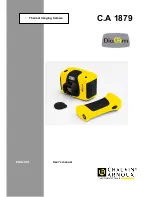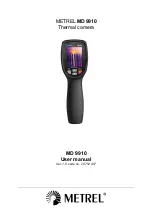
7.5
Different types of hot spots in electrical installations
7.5.1
Reflections
The thermographic camera sees any radiation that enters the lens, not only originating
from the object that you are looking at, but also radiation that comes from other
sources and has been reflected by the target. Most of the time, electrical components
are like mirrors to the infrared radiation, even if it is not obvious to the eye. Bare
metal parts are particularly shiny, whereas painted, plastic or rubber insulated parts
are mostly not. In the image below, you can clearly see a reflection from the thermo-
grapher. This is of course not a hot spot on the object. A good way to find out if what
you see is a reflection or not, is for you to move. Look at the target from a different
angle and watch the ‘hot spot.’ If it moves when you do, it is a reflection.
Measuring temperature of mirror like details is not possible. The object in the images
below has painted areas which are well suited for temperature measurement. The
material is copper, which is a very good heat conductor. This means that temperature
variation over the surface is small.
10717503;a2
Figure 7.11 Reflections in an object
7.5.2
Solar heating
The surface of a component with a high emissivity, for example, a breaker, can on a
hot summer day be heated up to quite considerable temperatures by irradiation from
the sun. The image shows a circuit breaker, which has been heated by the sun.
7
30
Publ. No. 1558146 Rev. a156 – ENGLISH (EN) – February 28, 2006
7 – Introduction to thermographic inspections of electrical installations
Test Equipment Depot - 800.517.8431 - 99 Washington Street Melrose, MA 02176
FAX 781.665.0780 - TestEquipmentDepot.com





































